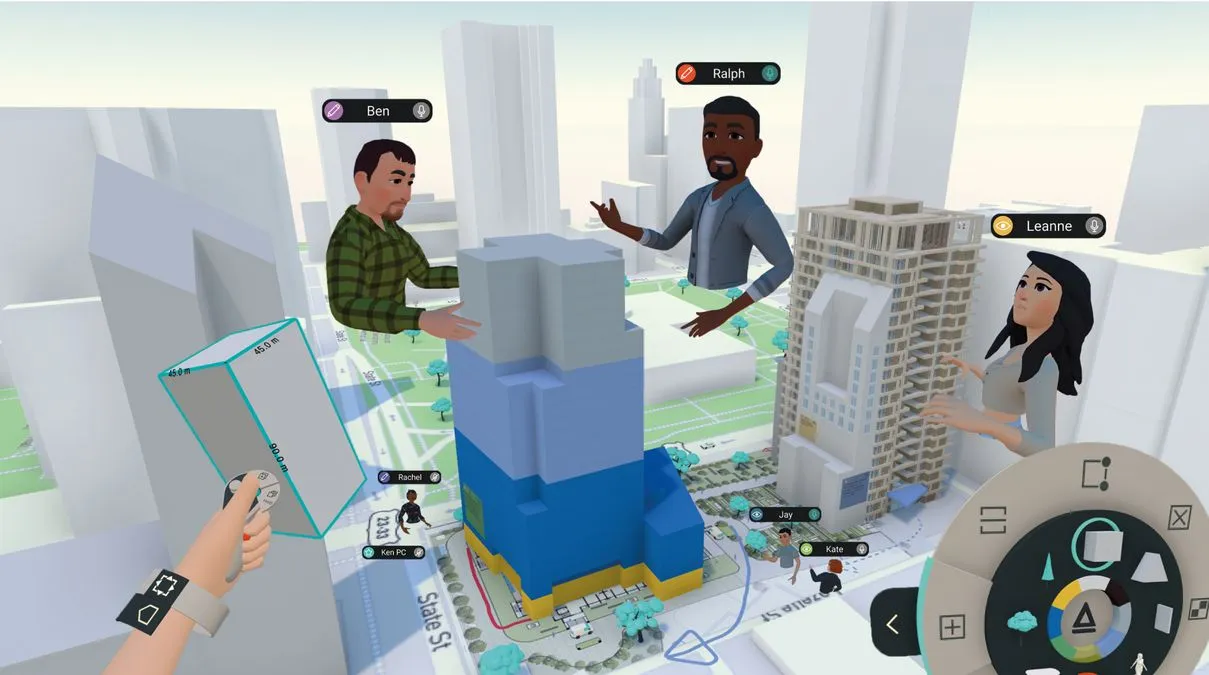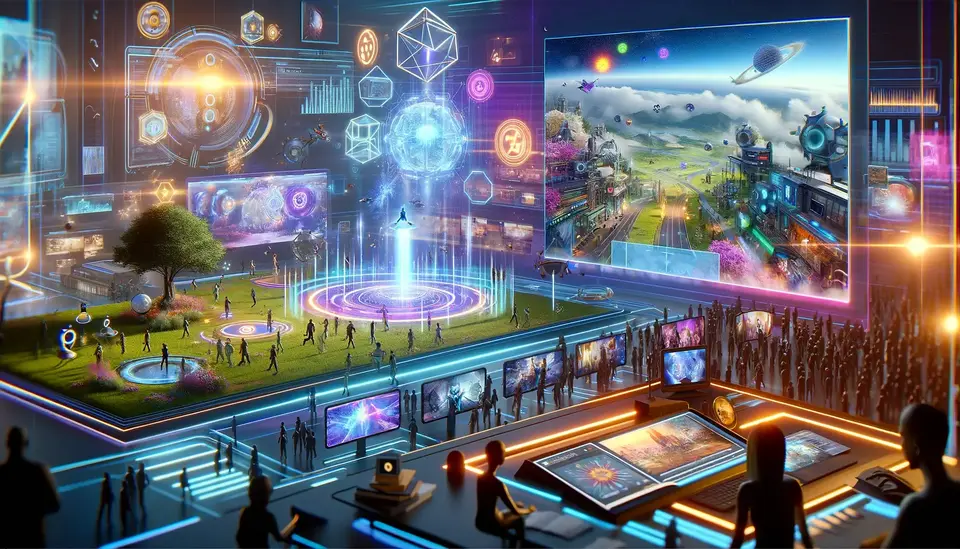15 Examples of the Use of Metaverse in Training
Posted on April 1, 2023 4 minutes 822 words
Table of contents
- 1. Virtual classrooms and lectures
- 2. Immersive simulations for medical training
- 3. Augmented reality job training
- 4. Virtual reality military training exercises
- 5. Language learning and cultural immersion
- 6. Virtual workshops for artistic skills and creative industries
- 7. Remote collaboration and team building exercises
- 8. Virtual lab simulations for STEM education
- 9. Virtual reality training for emergency responders
- 10. Soft skills training through interactive simulations
- 11. Virtual reality sports training and coaching
- 12. Inclusive education and accessibility through VR/AR
- 13. Virtual trade shows and industry-specific conferences
- 14. Gamification and immersive learning experiences
- 15. Virtual internships and job-shadowing opportunities
- Conclusion
The Metaverse is an expansive, immersive digital space where users can interact with each other, engage in various activities, and access content through virtual reality (VR) or augmented reality (AR) technologies. In recent years, the Metaverse has emerged as a powerful tool for training and skill development across various industries. In this blog post, we will explore 15 real-world examples of how the Metaverse is transforming the way we learn and acquire new skills.
1. Virtual classrooms and lectures
Companies like VirBELA and Engage are providing platforms for virtual classrooms, allowing students and teachers to connect and interact in an immersive, 3D environment. This approach facilitates remote learning, promotes engagement, and enables educators to incorporate visual and interactive elements to enhance the learning experience.
2. Immersive simulations for medical training
Medical professionals use platforms like Osso VR and Fundamental Surgery to simulate surgical procedures and practice techniques in a risk-free environment. These platforms provide realistic haptic feedback, allowing trainees to develop muscle memory and improve their skills before performing real-life procedures.
3. Augmented reality job training
Microsoft’s HoloLens and Google Glass Enterprise Edition offer augmented reality solutions for on-the-job training. Workers can access step-by-step instructions and overlay relevant information on their field of view, reducing the learning curve and enhancing productivity.
4. Virtual reality military training exercises
The US military utilizes platforms like Bohemia Interactive Simulations (BISim) to create realistic, immersive training environments for soldiers. These simulations help soldiers practice tactics, decision-making, and communication skills without the risks associated with real-life combat.
5. Language learning and cultural immersion
Platforms like Immerse and Mondly offer language learning experiences within the Metaverse, providing students with a chance to practice speaking and listening skills in realistic, culturally immersive environments. This approach increases engagement and accelerates language acquisition.
6. Virtual workshops for artistic skills and creative industries
Masterpiece Studio Pro and Tilt Brush are examples of platforms that enable artists and designers to create and collaborate in 3D virtual environments. These tools allow for new forms of artistic expression and provide an immersive way to learn and hone creative skills.
7. Remote collaboration and team building exercises
Platforms like Spatial and Teamflow offer virtual spaces for remote teams to collaborate and engage in team-building activities. These platforms foster a sense of connection and collaboration, enhancing teamwork and productivity.
8. Virtual lab simulations for STEM education
Labster and zSpace offer virtual lab experiences for students studying science, technology, engineering, and math (STEM). These platforms simulate real-life lab environments, enabling students to perform experiments and explore complex concepts without requiring access to expensive lab equipment.
9. Virtual reality training for emergency responders
Platforms like FLAIM Trainer and Apex Officer provide emergency responders with realistic VR simulations to practice their skills in a variety of scenarios, from firefighting to police interventions. This training helps improve decision-making, communication, and situational awareness in high-pressure situations.
10. Soft skills training through interactive simulations
Companies like Talespin and Mursion offer immersive simulations for developing soft skills such as leadership, communication, and empathy. These platforms use AI-driven virtual characters to simulate real-world scenarios, allowing users to practice their skills in a safe and controlled environment.
11. Virtual reality sports training and coaching
STRIVR and Rezzil offer VR training platforms for athletes, allowing them to practice skills, analyze performance, and visualize game scenarios. This technology provides valuable feedback and helps athletes refine their techniques, ultimately improving their performance on the field.
12. Inclusive education and accessibility through VR/AR
Platforms like eSight and IrisVision leverage AR technology to help visually impaired individuals access educational content. These devices enhance visual information in real-time, enabling users with low vision to participate in learning experiences alongside their peers.
13. Virtual trade shows and industry-specific conferences
Companies are increasingly hosting virtual trade shows and conferences within the Metaverse, using platforms like Virbela, vFairs, and Hopin. These events allow participants to network, attend workshops, and explore new products in an immersive, 3D environment, overcoming geographical barriers and reducing travel expenses.
14. Gamification and immersive learning experiences
Companies like Quicksave Interactive and Classcraft use gamification to create engaging, immersive learning experiences within the Metaverse. These platforms transform educational content into interactive games and challenges, increasing student motivation and retention.
15. Virtual internships and job-shadowing opportunities
Organizations are adopting virtual internships and job-shadowing experiences within the Metaverse, using platforms like InsideSherpa and Nepris. These experiences allow students to gain valuable insights into different career paths and develop professional skills in a virtual setting, overcoming geographical and logistical barriers.
Conclusion
The Metaverse is fundamentally changing the way we approach training and skill development. By leveraging virtual and augmented reality technologies, we can create more engaging, immersive, and effective learning experiences that cater to diverse learning styles and needs. As the Metaverse continues to evolve, its potential to revolutionize training across industries will only grow, ultimately shaping the future of education and workforce development.








